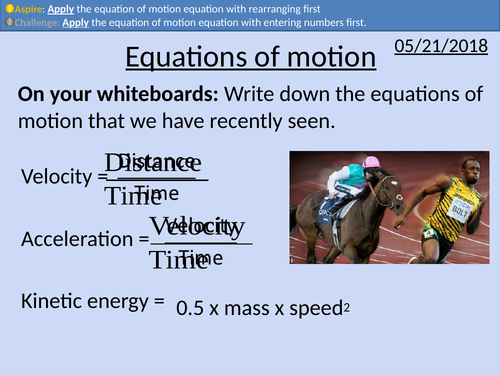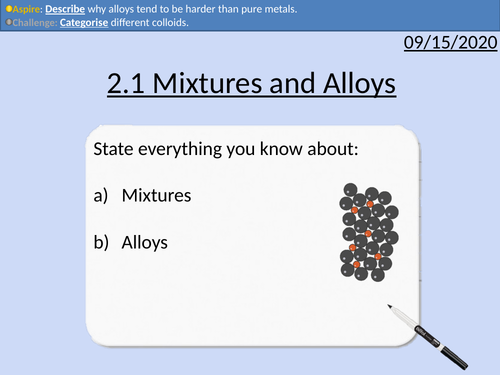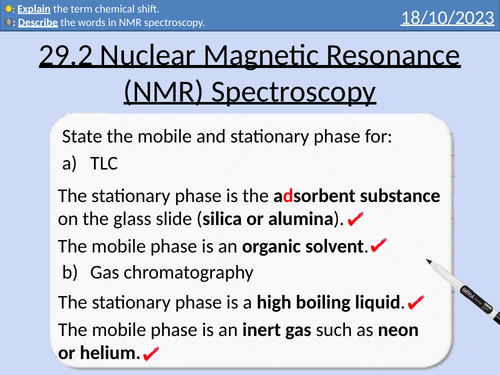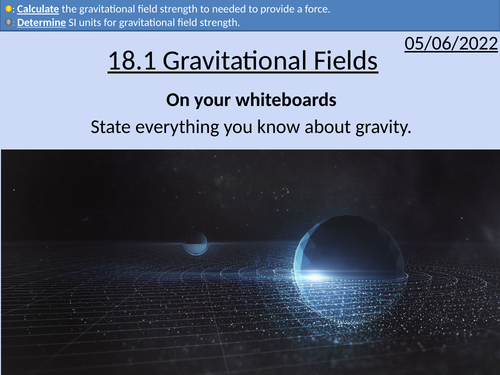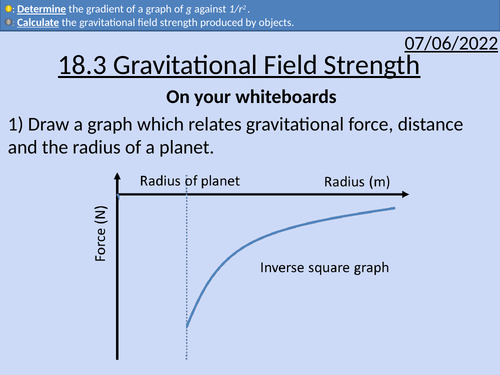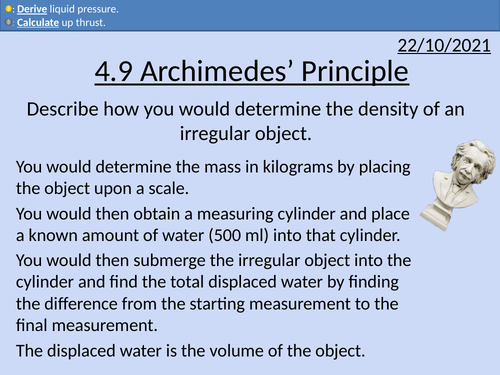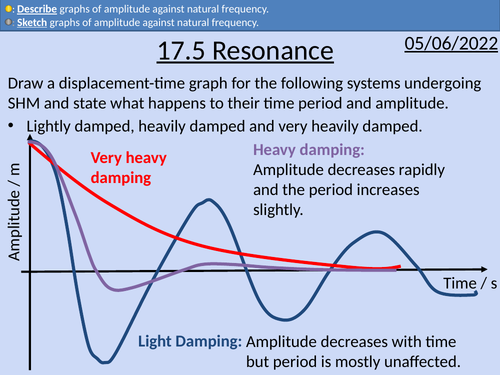497Uploads
168k+Views
71k+Downloads
All resources

GCSE Biology: Interaction of limiting factors
This presentation covers OCR Gateway Biology 9-1 B1.4.4 Interaction of limiting factors
This PowerPoint is a whole lessons included with student activities and animated answers.
Experimental procedures to investigate how the rate of photosynthesis is affected by:
Light level
Temperature
Carbon dioxide concentration
Inverse square law for relative light intensity

GCSE Biology: Factors Affecting Photosynthesis
This presentation covers OCR Gateway Biology 9-1 B1.4.3 Factors Affecting Photosynthesis
This PowerPoint is a whole lessons included with student activities and animated answers.
Definition for rate of photosynthesis
The rate of photosynthesis affects the rate of biomass
Limiting factors include, light level, carbon dioxide concentration, and temperature.
Graphs for rate of photosynthesis against light level, carbon dioxide concentration, and temperature.
Plotting data graphs.
Exam questions.

GCSE Biology: Photosynthesis
This presentation covers OCR Gateway Biology 9-1 B1.4.1 Photosynthesis
This PowerPoint is a whole lessons included with student activities and animated answers.
Word and symbol equation for photosynthesis.
Carbon dioxide diffuses from the air through the stomata.
Water travels by osmosis through the root hair cells.
Photosynthesis occurs inside the plant’s chloroplast.
Chloroplasts contain a green pigment called chlorophyll.
Photosynthesis is an endothermic reaction.
The two main stages of photosynthesis.
Comparing photosynthesis and aerobic respiration.

OCR A level Physics: Alpha-particle Scattering Experiment
OCR A level Physics: 24.1 Alpha-particle Scattering Experiment
Module 6 Particles and Medical Physics
This PowerPoint is a whole lesson included with student activities, animated answers, homework questions with answers provided.
This lesson covers:
Developments of scientific models
Thompson’s plum-pudding model
Rutherford’s nuclear (planetary) model
Rutherford’s experiment, observations, and conclusions
Using Coulomb’s law to find the minimum distance between particles

GCSE Physics: Equations of Motion
This presentation covers GCSE Physics OCR Gateway P2.1.6
Introduction of final speed^2 – initial speed^2 = 2 x acceleration x distance
Rearranging of final speed^2 – initial speed^2 = 2 x acceleration x distance
Derivation of final speed^2 – initial speed^2 = 2 x acceleration x distance
Three different methods for rearranging equations
Kinetic energy, acceleration and speed problems with answers

GCSE Biology: Anaerobic Respiration
This presentation covers OCR Gateway Biology 9-1 B1.3.3 Anaerobic Respiration
This PowerPoint is a whole lessons included with student activities and animated answers.
Recap of aerobic respiration
Conditions for anaerobic respiration
Word equation for anaerobic respiration in mammals
Lactic acid and its affects.
Oxygen debt
Comparing aerobic and anaerobic respiration in mammals.
Anaerobic respiration in plants - fermentation.
Fermentation word equation and symbol equation.
Exam questions.

OCR Applied Science: 2.1 Mixtures and Alloys
This PowerPoint presentation with worked examples and student activities covers:
Topic 2.1 of Science Fundementals of the OCR Applied Science Spec.
Types of mixtures to include solutions, colloids and suspensions
Difference between colloids and suspensions in terms of particle size
Uses of common colloids in nature and medicine
Types of colloids to include aerosols, emulsions, foams, gels and sols
Significance of colloids in nature and medicine
Alloys as mixtures of metals
The character and features of alloys
Uses of common alloys to include amalgam, solder, bronze, titanium alloy

A level Chemistry: Nuclear Magnetic Resonance (NMR) Spectroscopy
OCR A level Chemistry: 29.2 Nuclear Magnetic Resonance (NMR) Spectroscopy
This PowerPoint is a whole lesson included with student activities, animated answers, homework questions with answers provided.
This lesson covers:
Nuclear Spin
Resonance
Tetramethylsilane (TMS)
Chemical Shift ẟ

GCSE Biology: Carbohydrates, Proteins, and Lipids
This presentation covers OCR Gateway Biology 9-1 B1.3.1 Carbohydrates, Proteins, and Lipids
This PowerPoint is a whole lessons included with student activities and animated answers.
The three main macronutrients - carbohydrates, proteins, and lipids
Names of enzymes - carbohydrase, amylase, protease, lipase
What the macronutrients are broken down into - simple sugars, amino acids, fatty acids and glycerol.
Metabolic rate
Food tests and the positive results

GCSE Biology: Enzyme Reactions
This presentation covers OCR Gateway Biology 9-1 B1.2.4 Enzyme Reactions
This PowerPoint is a whole lessons included with student activities and animated answers.
Enzymes-catalysed reactions
Rate of reaction
Denaturing of enzymes and the active site
Optimum temperature and optimum pH for enzymes
Definition of concentration
Increasing concentration of enzymes and substrates
Saturation of substrates

GCSE Biology: Enzymes
This presentation covers OCR Gateway Biology 9-1 B1.2.3 Enzymes
This PowerPoint is a whole lessons included with student activities and animated answers.
Enzymes are made of protein.
Enzymes are biological catalysts.
Catalysts speed up the rate of reaction without being used up themselves.
Enzymes and the lock and key hypothesis.
Enzymes breaking down and bonding substrates.

GCSE Biology: Aerobic Respiration
This presentation covers OCR Gateway Biology 9-1 B1.3.2 Aerobic Respiration
This PowerPoint is a whole lessons included with student activities and animated answers.
Word equation for aerobic respiration
Balanced symbol equation for aerobic respiration
Aerobic respiration is an exothermic reaction
The structure of mitochondria
ATP and its uses
Why blood flow increases to muscles when exercising

GCSE Biology:Transcription and Translation
This presentation covers OCR Gateway Biology 9-1 B1.2.2 Transcription and Translation
This PowerPoint is a whole lessons included with student activities and animated answers.
The role of proteins and AI
Proteins as polymers
Explaining transcription
mRNA and complementary bases
Explaining translation

OCR A Level Physics: Gravitational Fields
OCR A Level Physics: Gravitational Fields presentation, homework and answers.

GCSE Biology: DNA
This presentation covers OCR Gateway Biology 9-1 B1.2.1 DNA
This PowerPoint is a whole lessons included with student activities and animated answers.
DNA stands for deoxyribonucleic acid.
DNA is found in the nucleus of cells.
DNA is packaged into a thread-like structure called chromosomes.
Humans typically have 46 chromosomes shared from their parents.
Genes are sections of DNA that code for physical characteristics.
The structure of DNA.
DNA is comprised of monomers called nucleotides.
A nucleotide consists of a phosphate group, a sugar (deoxyribose), and an organic base.
There are four organic bases: Adenine, A. Thymine, T. Cytosine, C. Guanine, G.
Hydrogen bonds in DNA.

GCSE Biology: Electron Microscopy
This presentation covers OCR Gateway Biology 9-1 B1.1.4 Electron Microscopy
This PowerPoint is a whole lessons included with student activities and animated answers.
Comparing sizes of different cells
Using standard form
Using SI prefixes (nano, micro, milli, kilo, mega)
Comparing electron microscopes and light microscopes.

OCR A Level Physics: Simple Harmonic Motion and Energy
OCR A Level Physics: Energy and Simple Harmonic Motion presentation with homework and answers

OCR A Level Physics: Gravitational Field Strength
OCR A Level Physics: Gravitational Field Strength presentation with homework and answers

OCR AS level Physics: Archimedes' Principle
OCR AS level Physics: Archimedes’ Principle is a part of the Module 3: Forces and Motion
Presentation come with worked examples, solutions and homeworks.





